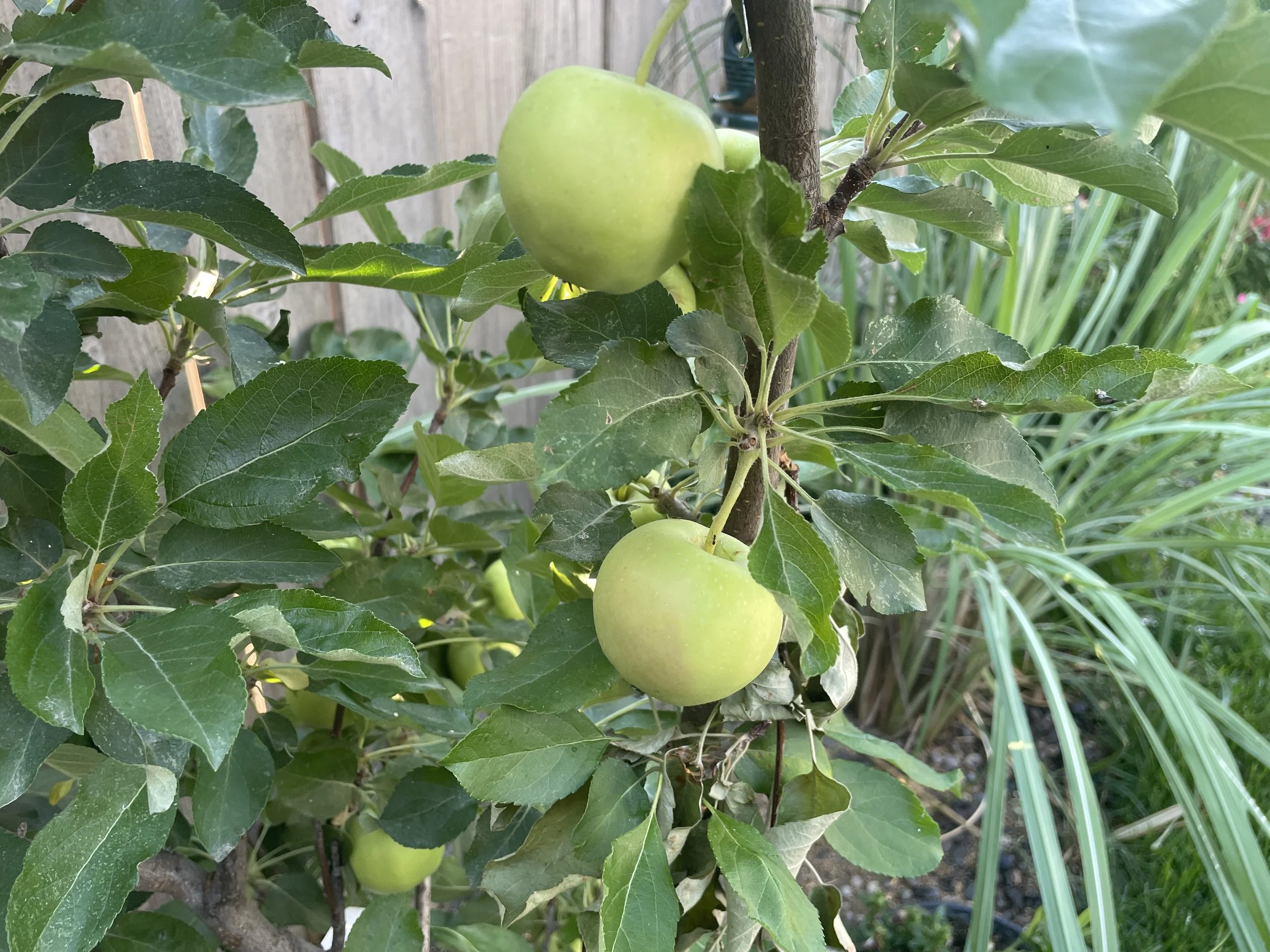Getting young fruit trees to bear can sometimes be a challenge.
Choose the Right Location
Young fruit trees will normally begin to fruit once the tree has become established in its new planting site. Several things can influence how soon your trees begin to bear, including weather, climate, tree variety or cultivar, and pollination.
We cannot change where we live, but we can influence the microclimate planting site of our fruit trees in our landscapes by utilizing the sun and providing winter weather protection.
Choose the Right Cultivar
Fruit bud hardiness is another factor in whether you get fruit or not. Apples seem to be the least susceptible to cold injury and apricots the most sensitive. Once a tree regularly begins to bear, fruit buds are formed each year and then, we only lose the crop when cold weather kills the buds.
Fruit trees are typically one or two years old when they are purchased, and most often they have been grown in containers. This is good because the tree has all of its root system intact when planted.
Dwarf trees will take longer to bear than moderate or seedling fruit trees.
Fruit trees need to be trained during the first year to benefit from their dwarfing characteristics or your tree will end up much larger than you expected. Scaffold branch selection should also be part of that training. A common mistake is to wait too long before starting to train the fruit tree. The first scaffold branches should be 18 to 24 inches from the ground. Don't be alarmed if the fruit tree does not begin to flower heavily for the first three to five years while you are training the scaffolds and establishing the tree.
Pollination
The last management strategy is making sure your fruit trees are pollinated properly.
Most apples are self-unfruitful, meaning that you need another apple variety blooming at the same time to provide pollen. Others that need cross-pollination include pear, sweet cherries, and plums.
Fruit trees are pollinated by bees. Bees are influenced by weather just like us, and they stay closer to home in cooler, wet weather. Better pollination occurs when the weather is dry and warm while the trees are in bloom. If you are spraying your trees, treat when the bees are not collecting pollen.
By choosing the right varieties for winter hardiness and pollination times, planting in an area that has both good air and water drainage, and starting your pruning and scaffold training that first year, your fruit trees can provide many years of beauty -- and fruit.
